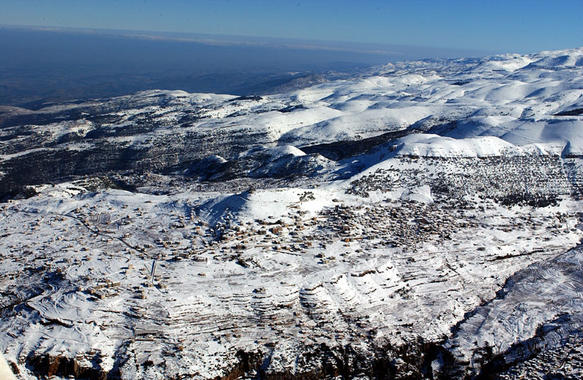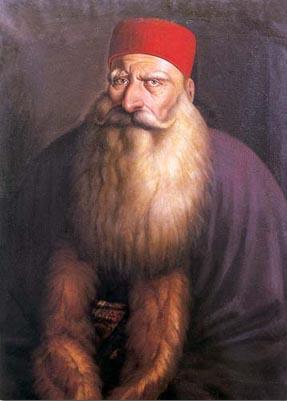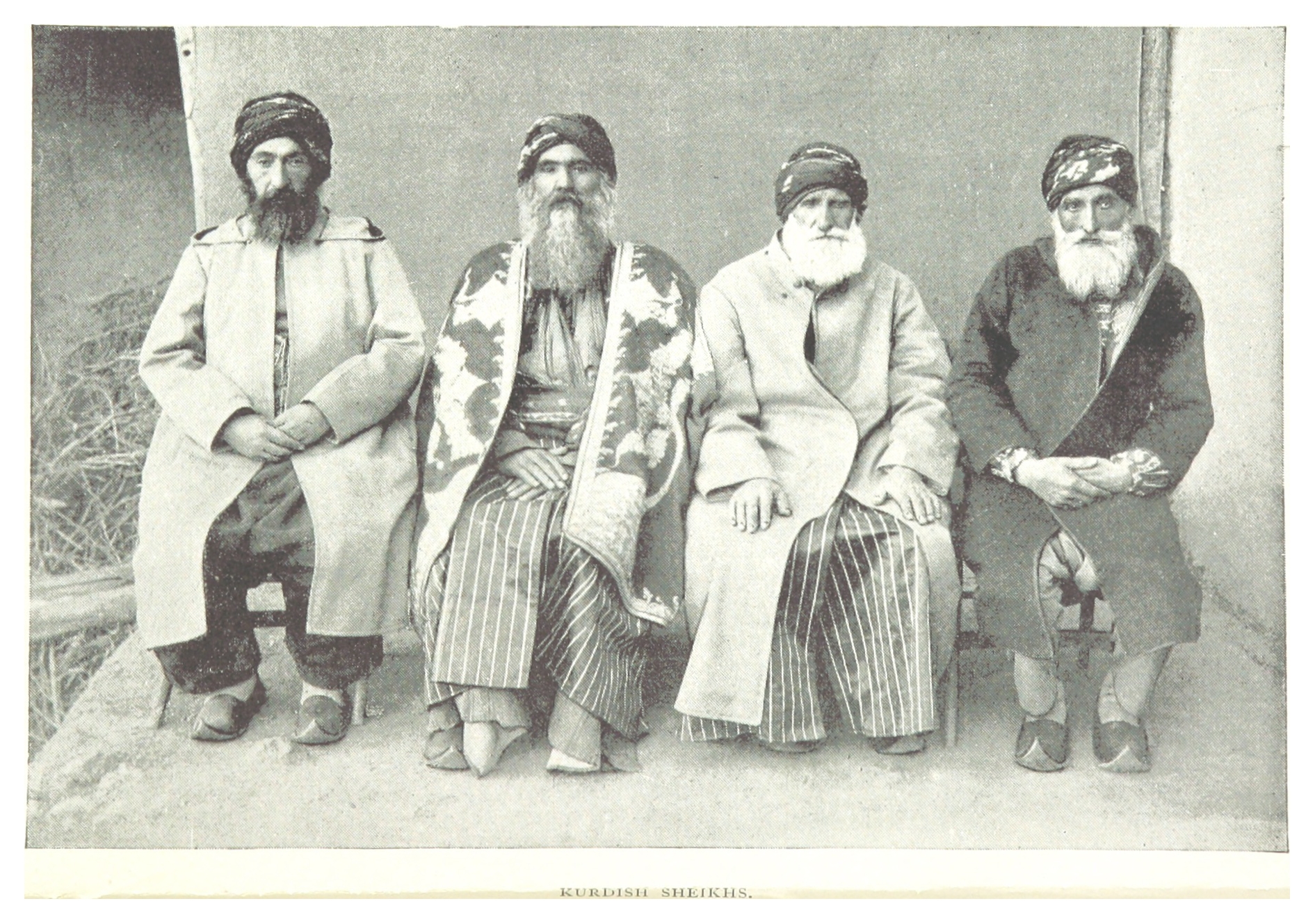|
Khazen
Khazen (also El-Khazen, Al-Khazen, Khazin or De Khazen; ) is a prominent Arab Levantine family and clan based in Keserwan District, Lebanon, Damascus, Syria, Nablus, Palestine (region), Palestine, as well as other districts around the Levant, predominantly in the Galilee in Israel. The family were very influential within the Maronite Church. Several members have played leading roles in the politics of Lebanon for many generations. Louis XIV of France, King Louis XIV elevated the family to the French nobility and referred to them as "princes of the Maronites" in many letters. Pope Clement X made them Count palatine, Counts Palatine. Most of the Lebanese Khazen branch is Maronite, while some other branches are Greek Orthodox and Muslim but are not related to the Mount-Lebanese, which were endowed with these honors. History The Khazen Sheikh, Cheikhs can trace back their lineage to the 9th century to the Ghassanids, when they were mainly located between Houran, Damascus, Baalbeck, an ... [...More Info...] [...Related Items...] OR: [Wikipedia] [Google] [Baidu] |
Tanyus Shahin
Tanyus Shahin Saadeh al-Rayfouni (also spelled ''Tanios Chahine Saadé Al Rayfouné'', given name also spelled ''Taniyus'' or ''Tanius''; 1815–1895) was a Maronites, Maronite muleteer and peasant leader from Mount Lebanon. He led a peasants' revolt in the area of Kisrawan, Keserwan in 1859, during which he drove out the area's Maronite nobility, the feudal Khazen lords, and declared a peasants' republic. While he had a reputation as a ruffian and provocateur among members of the Maronite clergy and European consuls, Shahin became a popular figure among Christian commoners, many of whom considered him the guardian of their interests, a view which Shahin promoted. Following his victory in Keserwan, Shahin and his fighters launched intermittent raids against villages in nearby regions, such as Byblos District, Byblos and Matn District, Matn, often in the name of defending the rights of local Christians. The assaults and their repercussions served as catalysts of the 1860 Mount Leba ... [...More Info...] [...Related Items...] OR: [Wikipedia] [Google] [Baidu] |
Kisrawan
The Kisrawan or Keserwan is a region between Mount Lebanon and the Mediterranean coast, north of the Lebanon, Lebanese capital Beirut and south of the Ibrahim River. It is administered by the eponymous Keserwan District, part of the Keserwan-Jbeil Governorate. In the 12th–13th centuries it was a borderland between the Crusader states along the coast and the Muslim governments in Damascus. Its inhabitants at that time were Twelver Shia Muslims, Alawites, Druze and Maronites, Maronite Christians. While the Kisrawanis acted independent of any outside authority, they often cooperated with the Crusader lords of Tripoli, Lebanon, Tripoli and Byblos. Soon after the Sunni Muslim Mamluk Sultanate, Mamluks conquered the Crusader realms, they launched a series of Kisrawan campaigns (1292–1305), punitive expeditions in 1292–1305 against the mountaineers of the Kisrawan. The assaults caused wide scale destruction and displacement, with Maronites from northern Mount Lebanon gradually migra ... [...More Info...] [...Related Items...] OR: [Wikipedia] [Google] [Baidu] |
Tanius Shahin
Tanyus Shahin Saadeh al-Rayfouni (also spelled ''Tanios Chahine Saadé Al Rayfouné'', given name also spelled ''Taniyus'' or ''Tanius''; 1815–1895) was a Maronite muleteer and peasant leader from Mount Lebanon. He led a peasants' revolt in the area of Keserwan in 1859, during which he drove out the area's Maronite nobility, the feudal Khazen lords, and declared a peasants' republic. While he had a reputation as a ruffian and provocateur among members of the Maronite clergy and European consuls, Shahin became a popular figure among Christian commoners, many of whom considered him the guardian of their interests, a view which Shahin promoted. Following his victory in Keserwan, Shahin and his fighters launched intermittent raids against villages in nearby regions, such as Byblos and Matn, often in the name of defending the rights of local Christians. The assaults and their repercussions served as catalysts of the 1860 Mount Lebanon civil war, particularly the battle of Beit Mery ... [...More Info...] [...Related Items...] OR: [Wikipedia] [Google] [Baidu] |
Joseph Ragi El Khazen
Joseph IX Ragi El Khazen (1791, Ajaltoun, Lebanon – 3 November 1854, Dimane, Lebanon), (or Youssef El-Khazen, ''Gazen'', , ) the 69th Maronite Catholic Patriarch of Antioch from 1845 until his death in 1854. He was previously Archeparch of Tripoli. Life Joseph Ragi El Khazen was born in the village of Ajaltoun, in the Keserwan District, Lebanon in 1791, and he was a member of the Khazen family, which ruled the Keserwan District. The Khazen family had the privilege of nominating three Archbishops, including the one of Damascus. However, Joseph El Khazen was appointed Archbishop of the Maronite Catholic Archeparchy of Tripoli and so consecrated bishop on April 6, 1830, by the Maronite Patriarch Joseph Peter Hobaish. When Patriarch Joseph Peter Hobaish died on May 23, 1845, Mount Lebanon was in the middle of the conflict between the Druze and Maronite communities after the so-called ''Double Qaimaqamate'' division of Lebanon. The bishops couldn't meet before August, and on ... [...More Info...] [...Related Items...] OR: [Wikipedia] [Google] [Baidu] |
Tobias El Khazen
Tobias El Khazen (or Tubiya al-Khazin, , , died 1766) was a former Eparch of the Maronite Catholic Archeparchy of Cyprus, Maronite Catholic Archeparchy of Tripoli and the 62nd Maronite Patriarch of Antioch from 1756 to his death in 1766. Life Tobias El Khazen was a member of the Abu Nawfal branch of the Khazen family, which ruled the Keserwan District, and he was a nephew of Patriarch Joseph Dergham El Khazen. He entered in the Lebanese Maronite Order. In 1733, when his uncle became patriarch, Tobias was appointed administrator of the Patriarchal residence of Qannubin Monastery, in the Kadisha Valley, and appointed titular bishop of Naplouse. On February 12, 1733, El Khazen was ordained bishop by Maronite Patriarch of Antioch Jacob Awad. In 1736 he was appointed bishop of the Maronite Catholic Archeparchy of Cyprus, and with this title he participated in the 1736 Maronite Synod of Mount Lebanon. In 1743 at the death of his uncle Patriarch Joseph Dergham Khazen, after the init ... [...More Info...] [...Related Items...] OR: [Wikipedia] [Google] [Baidu] |
Joseph Dergham El Khazen
Joseph V Dergham El Khazen (or Yusuf Dargham al-Khazin, , , born in Ghosta, Lebanon - died on May 13, 1742), was the 60th Maronite Patriarch of Antioch from 1733 to his death in 1742. Life Early life Joseph Dergham El Khazen was a member of the Khazen family and he was born in the village of Ghosta, in the Keserwan District, Lebanon. He married, and after the death of his wife he became priest. He was consecrated titular bishop of Ghosta in 1728 by the hands of patriarch Jacob Awad. At the death of Jacob Awad, the electoral synod couldn't decide between two pretenders, so finally on February 25, 1733, he was elected for acclamation because of his influential family. The confirmation of his election by Pope Clement XII arrived on December 18, 1733, with the brief Cum nos a vinculo ierre Dib, op. cit., col. 79./ref> and El Khazen received the pallium. Lebanese Council of 1736 The need for reform of the Maronite Church, the ecclesiastical discipline of the religious establishm ... [...More Info...] [...Related Items...] OR: [Wikipedia] [Google] [Baidu] |
Mount Lebanon
Mount Lebanon (, ; , ; ) is a mountain range in Lebanon. It is about long and averages above in elevation, with its peak at . The range provides a typical alpine climate year-round. Mount Lebanon is well-known for its snow-covered mountains, home to surviving Cedrus libani, Lebanese cedar forests and diverse high-altitude flora and fauna. The name Lebanon itself originates from the white, snow-covered tops of this mountain range. Geography The Mount Lebanon range extends along the entire country for about , parallel to the Mediterranean Sea, Mediterranean coast. The highest peak is Qurnat as Sawda', at . The range receives a substantial amount of precipitation, including snow, which averages around in depth.Jin and Krothe. ''Hydrogeology: Proceedings of the 30th International Geological Congress'', p. 170 Lebanon has historically been defined by the mountains, which provided protection for the local population. In Lebanon, changes in scenery are related less to geographical ... [...More Info...] [...Related Items...] OR: [Wikipedia] [Google] [Baidu] |
Fakhr-al-Din II
Fakhr al-Din Ma'n (; 6 August 1572 13 April 1635), commonly known as Fakhr al-Din II or Fakhreddine II (), was the paramount Druze emir of Mount Lebanon from the Ma'n dynasty, an Ottoman governor of Sidon-Beirut and Safed, and the strongman over much of the Levant from the 1620s to 1633. For uniting modern Lebanon's constituent parts and communities, especially the Druze and the Maronites, under a single authority for the first time in history, he is generally regarded as the country's founder. Although he ruled in the name of the Ottomans, he acted with considerable autonomy and developed close ties with European powers in defiance of the Ottoman imperial government. Fakhr al-Din succeeded his father as the emir of the Chouf mountains in 1591. He was appointed over the sanjaks (districts) of Sidon-Beirut in 1593 and Safed in 1602. Despite joining the rebellion of Ali Janbulad in 1606, Fakhr al-Din remained in his post and the Ottomans recognized his takeover of the K ... [...More Info...] [...Related Items...] OR: [Wikipedia] [Google] [Baidu] |
Keserwan District
Keserwan District (, transliteration: ''Qaḍā' Kisrawān'') is a district (''qadaa'') in Keserwan-Jbeil Governorate, Lebanon, to the northeast of Lebanon's capital Beirut. The capital, Jounieh, is overwhelmingly Maronite Christian. The area is home to the Jabal Moussa Biosphere Reserve. Etymology According to the medieval historian Gabriel ibn al-Qilai, the name “Kesrwan” derives from the Maronite muqadam Kisra of Baskinta. During the time of the Crusades, Keserwan was the northern frontier of the Kingdom of Jerusalem. Demographics According to registered voters in 2014: Electoral constituency The district is part of the Keserwan-Byblos electoral district, with the district of Keserwan being allocated 5 Maronite seats (and the overall constituency having 7 Maronites and 1 Shi'ia). Cities, towns, and villages * Aazra * Adma *Adonis * Ain-bzil * Ain El Delbeh * Ain el-Rihaneh * Aintoura * Ajaltoun * Akaybeh * Aramoun * Ashqout * Attine * Azra & Ozor * Ballouneh * ... [...More Info...] [...Related Items...] OR: [Wikipedia] [Google] [Baidu] |
Count Palatine
A count palatine (Latin ''comes palatinus''), also count of the palace or palsgrave (from German ''Pfalzgraf''), was originally an official attached to a royal or imperial palace or household and later a nobleman of a rank above that of an ordinary count. The title originated in the Late Roman Empire. In the Middle Ages especially and into modern times, it is associated with the Holy Roman Empire,"palatine, adj.1 and n.1". OED Online. June 2019. Oxford University Press. https://www.oed.com/view/Entry/136245?redirectedFrom=count+palatine& (accessed July 31, 2019). especially Electoral Palatinate. The office, jurisdiction or territory of a count palatine was a county palatine or palatinate. In England the forms earl palatine and palatine earldom are rare alternative terms. Importance of a count palatine in medieval Europe ''Comes palatinus'' This Latin title is the original, but is also pre-feudal: it originated as Roman ''comes'', which was a non-hereditary court title of ... [...More Info...] [...Related Items...] OR: [Wikipedia] [Google] [Baidu] |
Chehab Family
The Shihab dynasty (alternatively spelled Chehab; , ALA-LC: ''al-Shihābiyūn'') is an Arab family whose members served as the paramount tax farmers and emirs of Mount Lebanon from the early 18th to mid-19th century, during Ottoman Empire, Ottoman rule (1517–1918). Before then, the family had been in control of the Wadi al-Taym region, purportedly as early as the 12th century. During early Ottoman rule, they maintained an alliance and marital ties with the Ma'n dynasty, the Chouf-based, paramount Druze emirs and tax farmers of Mount Lebanon. When the Ahmad Ma'n, last Ma'nid emir died without male progeny in 1697, the chiefs of the Druze in Mount Lebanon appointed the Shihab emir, Bashir, whose mother belonged to the Ma'n, as his successor. Bashir was succeeded by another Shihab emir with a Ma'nid mother, Haydar, after his death. Under Haydar, the Shihabs crushed their main rivals for paramountcy amongst the Druze at the Battle of Ain Dara in 1711, consolidating their dominance ... [...More Info...] [...Related Items...] OR: [Wikipedia] [Google] [Baidu] |
Sheikh
Sheikh ( , , , , ''shuyūkh'' ) is an honorific title in the Arabic language, literally meaning "elder (administrative title), elder". It commonly designates a tribal chief or a Muslim ulama, scholar. Though this title generally refers to men, there are also a small number of female sheikhs in history. The title ''Syeikha'' or ''Sheikha'' generally refers to women. In some countries, it is given as a surname to those of great knowledge in religious affairs, by a prestigious religious leader from a silsila, chain of Sufi scholars. The word is mentioned in the Qur'an in three places: verse 72 of Hud (surah), Hud, 78 of Yusuf (surah), Yusuf, and 23 of al-Qasas. A royal family member of the United Arab Emirates and some other Arab countries, also has this title, since the ruler of each emirate is also the sheikh of their tribe. Etymology and meaning The word in Arabic stems from a Semitic root, triliteral root connected with aging: , ''shīn-yā'-khā. The title carries the me ... [...More Info...] [...Related Items...] OR: [Wikipedia] [Google] [Baidu] |







